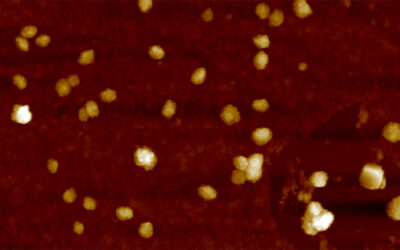Pluripotent stem cells have the potential to grow into any cell in the body. The isolation and growth of these pluripotent cells, in the form of embryonic stem cells and induced pluripotent stem cells, offer insights into the earliest stages of mammalian development. There are also enormous clinical opportunities in utilizing human pluripotent stem cells to generate desired cell types for disease modeling or cell replacement therapy. Therefore, understanding the nature of pluripotency has wide implications for understanding human biology and the future of regenerative medicine.
Genetic screening is a powerful approach to uncover previously unknown regulatory mechanisms. The ability of pluripotent stem cells to grow indefinitely in the laboratory setting makes them particularly appealing for large-scale genetic screening. Genetic screening methods interrogating pluripotency have ranged from random mutagenesis to RNAi directed knockdown. The advent of CRISPR technology means one can now quickly and efficiently perform genetic screens on pluripotent stem cells and has led to a rapid proliferation of screens.
This WIREs Systems Biology and Medicine review collects and contextualizes the work done so far using genetic screening techniques to understand human and mouse pluripotent stem cells. Importantly, while all the screens highlighted focus on pluripotency, there are distinctions between them. Some focus on the maintenance of pluripotency, which, while normally a transient state in embryonic development, can be maintained indefinitely in the lab.
Different states of pluripotency have been investigated by genetic screens, offering insights into developmental progression and self-renewal. Screens to understand the dissolution of pluripotency offer insights into mammalian development, and screens to understand the acquisition of pluripotency offer the hope of improved iPSC generation and even understanding of cancer transformation. Finally screens for the transition between different pluripotent states provide insights into development and the requirements for pluripotency. Moreover, the collection of genetic screens for the pluripotent state provide a model for using genetic screens to study other states, from different stages of development to disease states.
The usefulness of such genetic screens has been recently demonstrated by a number of studies summarized in this WIREs Systems Biology and Medicine review. For instance, in a recently published work by the authors in Nature Genetics, the researchers performed a CRISPR screen in human embryonic stem cells to assay for the development of definitive endoderm, the very first step towards making endoderm derived organs such as the lung, the liver, the stomach, the intestine and the pancreas. They discovered that genes in the JNK-JUN family safeguard pluripotency from precocious definitive endoderm differentiation and demonstrated that treatment with a JNK inhibitor could not only increase the efficiency of human pluripotent stem cells to form definitive endoderm, but also increase the efficiency of generating pancreas or lung progenitor cells. This work offers one example of how genetic screens can be used to expand our knowledge of human development and accelerate the pre-clinical research progress in human pluripotent stem cell.

















